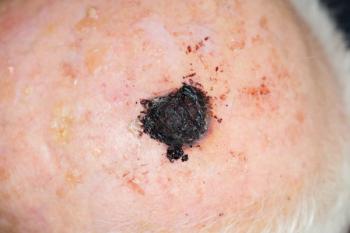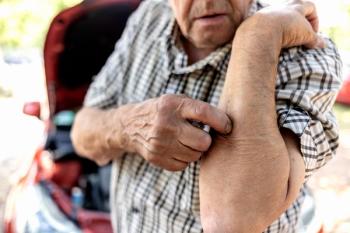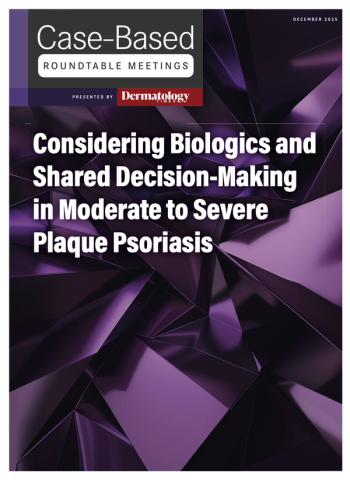
ASAP Protocol Yields 82% Keloid Resolution
Key Takeaways
- Keloids are more common in individuals with darker skin tones, posing treatment challenges due to high recurrence rates.
- The ASAP protocol combines hydrocolloid occlusion, 5-FU/triamcinolone injections, and IPL therapy to improve keloid treatment outcomes.
Discover an innovative non-surgical keloid treatment protocol that achieves high satisfaction and low recurrence rates for patients with darker skin tones.
Histologically, keloids result from chronic inflammation and disrupted collagen synthesis, particularly in the reticular dermis.1 These lesions are more common in individuals with darker skin phototypes, including African, Asian, and Hispanic populations, and exhibit higher prevalence in regions like Latin America, likely due to mixed genetic heritage and variable skin pigmentation.2
Background
Despite the availability of numerous therapeutic approaches—ranging from surgical excision to corticosteroid and chemotherapeutic injections—the management of keloids remains challenging due to high recurrence rates. Recurrence can reach up to 100% following surgery alone and remains significant even after steroid or bleomycin injections.3 The clinical community continues to seek treatment strategies that ensure sustained efficacy, minimize recurrence, and improve patient satisfaction.
To address these challenges, the ASAP algorithm (Assessment, Softening, Application of technologies and antifibrotic drugs, Pigmentation) was developed. This protocol integrates hydrocolloid occlusion, 5-fluorouracil (5-FU) combined with triamcinolone injections, and intense pulsed light (IPL) therapy. Occlusion improves pliability, enabling more tolerable and effective drug injections.4 The subsequent use of IPL targets vascularity and induces edema, further softening the lesions for improved outcomes.
Methods and Materials
A retrospective longitudinal study evaluated this protocol's efficacy in a Brazilian cohort composed predominantly of high phototype patients. Seventy-nine participants, aged 21 to 74 years, were included based on a confirmed keloid diagnosis and a minimum of 19 months post-treatment. Exclusion criteria involved prior radiotherapy and Fitzpatrick skin types I–II. All patients underwent the ASAP protocol, including hydrocolloid dressing application for 2 or more months, monthly intralesional 5-FU/triamcinolone injections, and IPL therapy prior to each injection.5
The results were promising. A striking 82.3% of patients achieved complete lesion flattening and erythema improvement. Recurrence was exceptionally rare, at only 1.3%. Pain was the sole reported adverse effect, affecting 8.9% of cases, and most symptoms (pain and pruritus) resolved within four months of treatment. High satisfaction rates (94.9%) further reinforced the protocol's acceptance and tolerability among patients.
Statistical analysis revealed no significant correlation between treatment duration and clinical resolution. Similarly, researchers noted factors such as age, gender, and keloid location did not significantly influence outcomes. However, prior corticosteroid infiltration was linked to longer treatment durations, suggesting it may contribute to treatment resistance. Weak but statistically significant correlations were found between keloid age and treatment length, reinforcing the potential benefit of early intervention.
The Detroit scale and Likert scale evaluations confirmed subjective and objective improvements post-treatment. No significant predictors of recurrence or complete resolution were identified through logistic regression, potentially due to the homogeneity of outcomes and limited recurrence events.
This study stands out for its long follow-up period—ensuring that the low recurrence rates observed are not transient—and its focus on an underrepresented population. The results suggest that the ASAP protocol is a robust, well-tolerated, and highly effective method for treating keloids in patients with darker skin tones, a group historically underserved in clinical dermatology research.
Conclusion
The study found that the multimodal ASAP approach offers a significant advancement in keloid therapy, particularly for individuals with higher phototypes. Its stepwise, minimally invasive protocol addresses several limitations of traditional therapies, notably recurrence and patient discomfort. High resolution rates, minimal adverse effects, and substantial patient satisfaction make it a compelling standard-of-care candidate. The study suggested future research should aim to validate these findings in broader populations and explore potential refinements—such as optimizing IPL parameters or integrating emerging antifibrotic agents—to further improve efficacy and shorten treatment duration.
References
- Oliveira GV, Hawkins HK, Chinkes D, et al. Hypertrophic versus non hypertrophic scars compared by immunohistochemistry and laser confocal microscopy: type I and III collagens. Int Wound J. 2009;6(6):445-452. doi:10.1111/j.1742-481X.2009.00638.x
- O'Sullivan ST, O'Shaughnessy M, O'Connor TP. Aetiology and management of hypertrophic scars and keloids. Ann R Coll Surg Engl. 1996;78(3 ( Pt 1)):168-175.
- Ekstein SF, Wyles SP, Moran SL, Meves A. Keloids: a review of therapeutic management. Int J Dermatol. 2021;60(6):661-671. doi:10.1111/ijd.15159
- de Oliveira GV, Gold MH. Hydrocolloid dressings can be used to treat hypertrophic scars: An outpatient dermatology service devoted to treat keloids and challenging scars. J Cosmet Dermatol. 2020;19(12):3344-3348. doi:10.1111/jocd.13792
- Brandão MPAS, Vieira CFO, Rocha DBB, et al. Outcomes of a non-surgical combination therapy for keloids in skin of color patients: A 10-year follow-up study. Int J Dermatol. Published online May 5, 2025. doi:10.1111/ijd.17829
Newsletter
Like what you’re reading? Subscribe to Dermatology Times for weekly updates on therapies, innovations, and real-world practice tips.


















